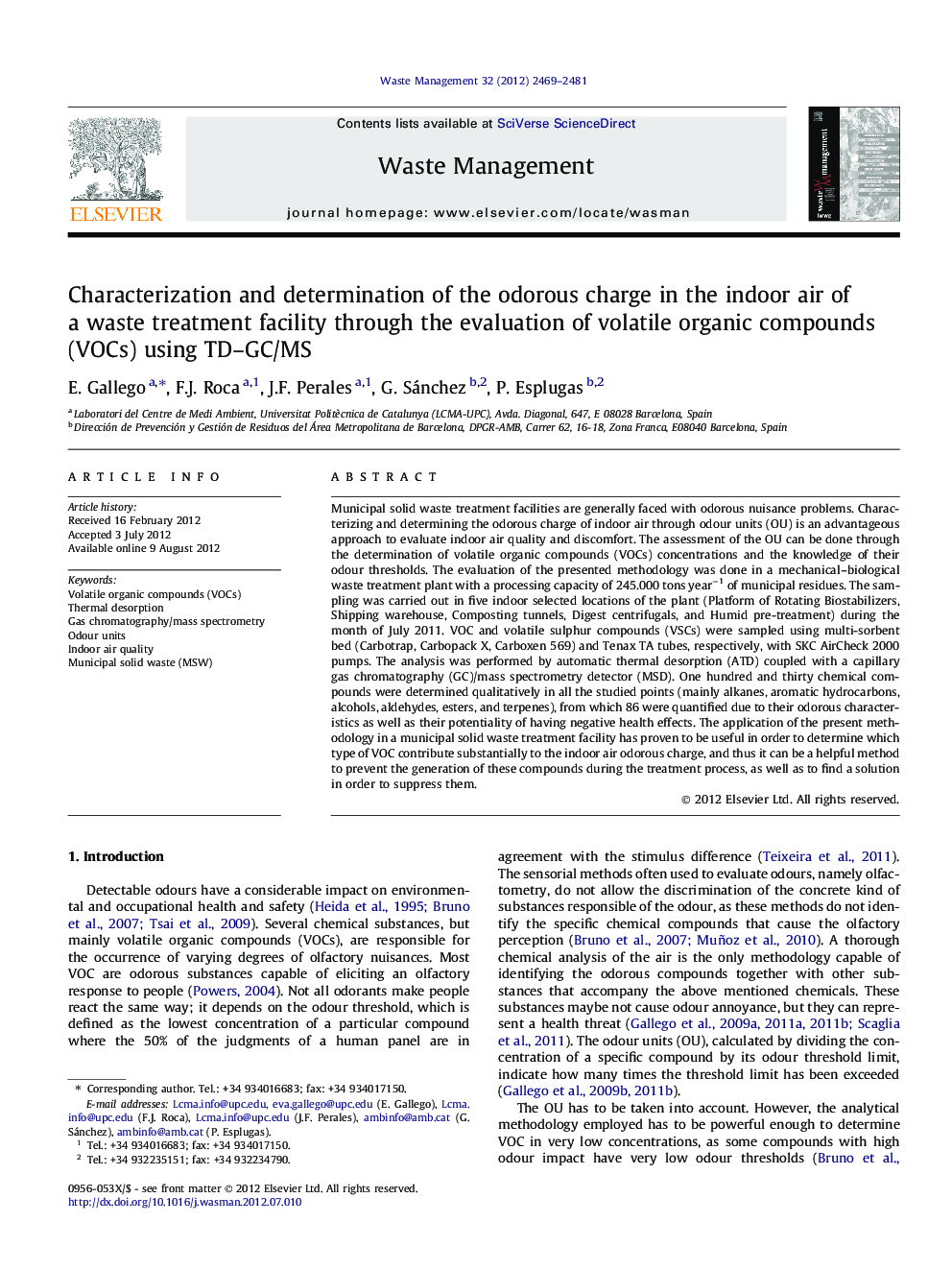| Article ID | Journal | Published Year | Pages | File Type |
|---|---|---|---|---|
| 4472224 | Waste Management | 2012 | 13 Pages |
Municipal solid waste treatment facilities are generally faced with odorous nuisance problems. Characterizing and determining the odorous charge of indoor air through odour units (OU) is an advantageous approach to evaluate indoor air quality and discomfort. The assessment of the OU can be done through the determination of volatile organic compounds (VOCs) concentrations and the knowledge of their odour thresholds. The evaluation of the presented methodology was done in a mechanical–biological waste treatment plant with a processing capacity of 245.000 tons year−1 of municipal residues. The sampling was carried out in five indoor selected locations of the plant (Platform of Rotating Biostabilizers, Shipping warehouse, Composting tunnels, Digest centrifugals, and Humid pre-treatment) during the month of July 2011. VOC and volatile sulphur compounds (VSCs) were sampled using multi-sorbent bed (Carbotrap, Carbopack X, Carboxen 569) and Tenax TA tubes, respectively, with SKC AirCheck 2000 pumps. The analysis was performed by automatic thermal desorption (ATD) coupled with a capillary gas chromatography (GC)/mass spectrometry detector (MSD). One hundred and thirty chemical compounds were determined qualitatively in all the studied points (mainly alkanes, aromatic hydrocarbons, alcohols, aldehydes, esters, and terpenes), from which 86 were quantified due to their odorous characteristics as well as their potentiality of having negative health effects. The application of the present methodology in a municipal solid waste treatment facility has proven to be useful in order to determine which type of VOC contribute substantially to the indoor air odorous charge, and thus it can be a helpful method to prevent the generation of these compounds during the treatment process, as well as to find a solution in order to suppress them.
► The odorous charge of a municipal solid waste treatment plant was characterized. ► One hundred and thirty chemical compounds were determined qualitatively. ► Alcohols, esters, terpenoids and acids showed higher concentrations. ► Odour units (OU) in the sampling points ranged between 1166 and 27,791 OU. ► Esters, acids and aldehydes were the families that contributed more to OU.
